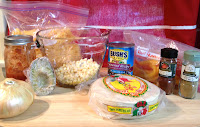Some of you
may remember that I had the amazing opportunity to go to South Africa during
the summer of 2006. I am excited to
share with you that I have been given the opportunity to return this summer with
the Bible Church of Little Rock Student Ministries!
While in South Africa this summer, we will
be helping care for children orphaned due to the AIDS virus at the Muphamuzi Baby Home, doing construction on house where they live, and partnering with
the local church in their current ministries! Each
of our 15 team members has been asked to raise $3,000. We trust that the Lord will provide
enough money if He wants us to go. If
you would like to be part of our support team, here’s how!
How to support us through prayer:
-
Softening
of hearts to hear and accept the gospel
-
Building
up of the local church in South Africa
-
Encouragement
of local missionaries who serve there
-
That
we would reflect Christ and point others to Him
-
Physical
health, safety, unity, and servant’s hearts for our team
-
Provision
of adequate financial support
How to support us financially: Donations are tax-deductible, and checks
may be made out to “BCLR” with “South Africa/Sarah Ray” in the
memo. I would be happy to collect donations
of any amount, or you may mail your check to BCLR @ 19111 Cantrell Road, LR,
AR 72223.
**Online
Option: If
it’s more convenient for you to donate online, you can send money through PayPal. It's really easy and takes less than 2 minutes! Just:
- log in and select the blue "Send Money" tab or click here
- follow the steps, and when prompted choose to send funds to: scrockern-paypal@yahoo.com
- if you would like to claim a tax-deduction on PayPal donations, please email your name/address/amount to this address also!
Thank you SO much for taking the time to consider supporting my team as we serve the Lord
in South Africa!

































